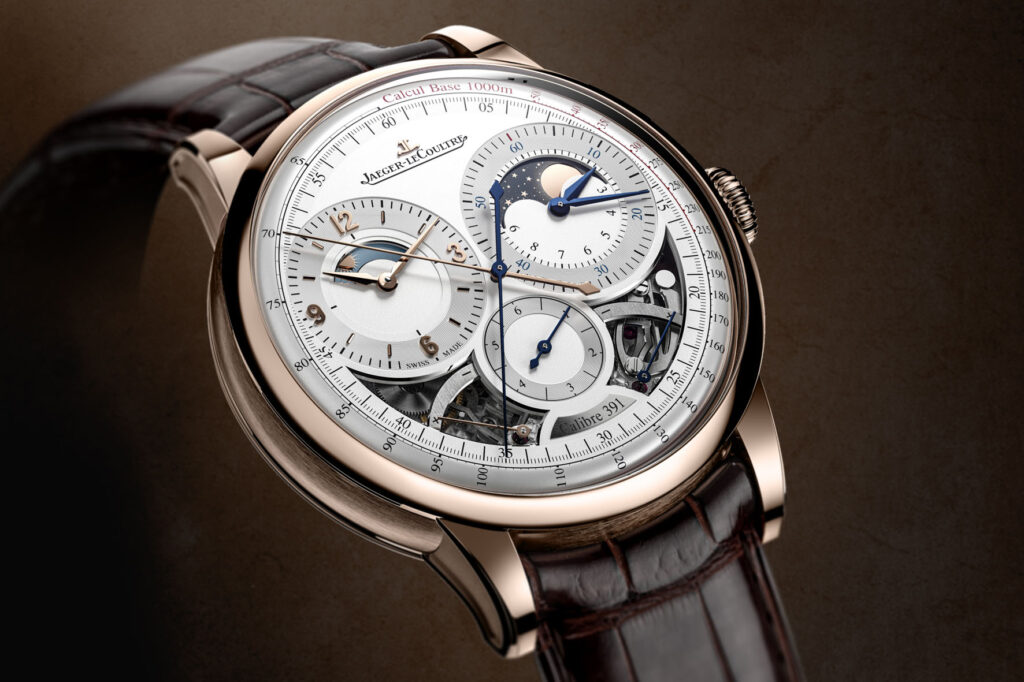Jaeger-LeCoultre: Duometre Chronograph Moon
17 April 2024In 2007 Jaeger-LeCoultre launched the ground-breaking Duometre mechanism in the form of a chronograph – the complication that epitomises the concept of precision. In 2024, the Maison applies the Duometre concept in an entirely new timepiece, marrying the high precision of a chronograph with the charm of a celestial complication. Powered by the new Calibre 391, the Duometre Chronograph Moon presents an intriguing contrast between the lightning-fast operation of the chronograph – which can time intervals as small as 1/6th of a second – and the slow rhythm of the moon as it passes through its cycle in 29.53 days, complemented by a Night and Day display.

DUOMETRE, THE SOLUTION
The fundamental problem of complex mechanical watches is that, for any complication to operate, it naturally draws on some of the power provided by the barrel. This disrupts the perfectly regular and constant supply that is required by the escapement to fulfil its timekeeping function as precisely as possible.

The search for a solution to this problem at Jaeger-LeCoultre during the early 2000s eventually led to the invention of the Duometre mechanism. Introduced in 2007 and patented by Jaeger-LeCoultre, it features two separate barrels and two independent gear trains – one to drive the escapement (for timekeeping) and one to power the complications – both integrated into a single calibre and linked to a single escapement. For the first time, it was possible to guarantee that the movement’s isochronism is not compromised by the operation of any complication.
THE NEW CALIBRE 391
For Calibre 391, Jaeger-LeCoultre’s engineers started from the ground up to develop a fully integrated movement that combines a manually wound mono-pusher chronograph with moon phase and night-day complications, as well as two power reserve indicators and a seconde foudroyantedisplay.
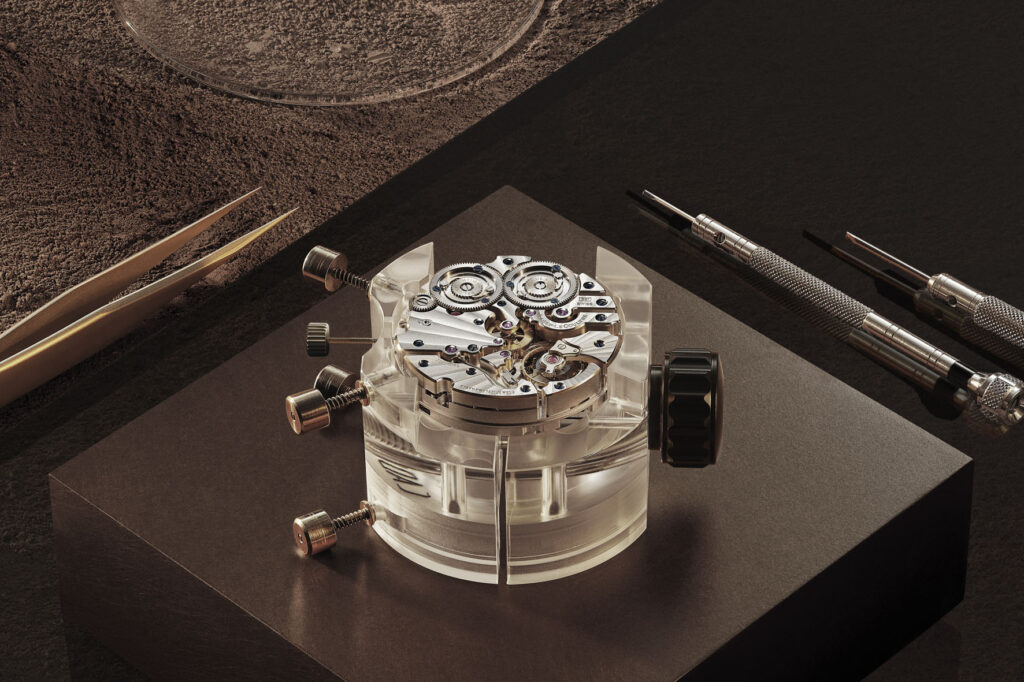
When the chronograph mechanism is activated, the foudroyante hand begins its whirling dance, making a complete rotation in one second, during which it beats six times – stopping instantaneously when the chronograph timer is stopped and thus providing a reading accurate to 1/6th of a second.
On the dial side of the Duometre Chronograph Moon, two open-worked sections offer intriguing glimpses of the mechanism, hinting at the mechanical beauty of the calibre. On the reverse side, fully revealed beneath the transparent crystal case-back, much of the movement is open-worked and an array of bridges seems almost to be floating above the levers and wheels, drawing the eye deep into the mechanism. Creating visual unity across the entire expanse of the movement, the bridges are decorated with sunrayed Geneva stripes. Traditional Haute Horlogerie finishes abound: crisply bevelled and polished angles define the edges of the bridges; brushed surfaces contrasts with polished metal; perlage on the main plate reflects light back up through the mechanism; and blue screws provide a pleasing contrast to the silvery tones of the metal.
A RICH DIAL
The dial is both elegant and intuitive to read, featuring the distinctive three-counter layout and long, thin hands that make the Duometre so recognisable. Echoing the aesthetic of traditional sector dials, the main dial surface and the centre of each sub-dial has the fine, almost powdery texture achieved by the opaline finish; in contrast, the broad ring encircling each sub-dial is decorated with azuré (ultra- fine engraving in perfectly regular, concentric circles). Adding to the visual appeal, the sub-dials are slightly sunken below the main surface, while the edge of the dial is subtly curved, closely following the contours of the glass box crystal.
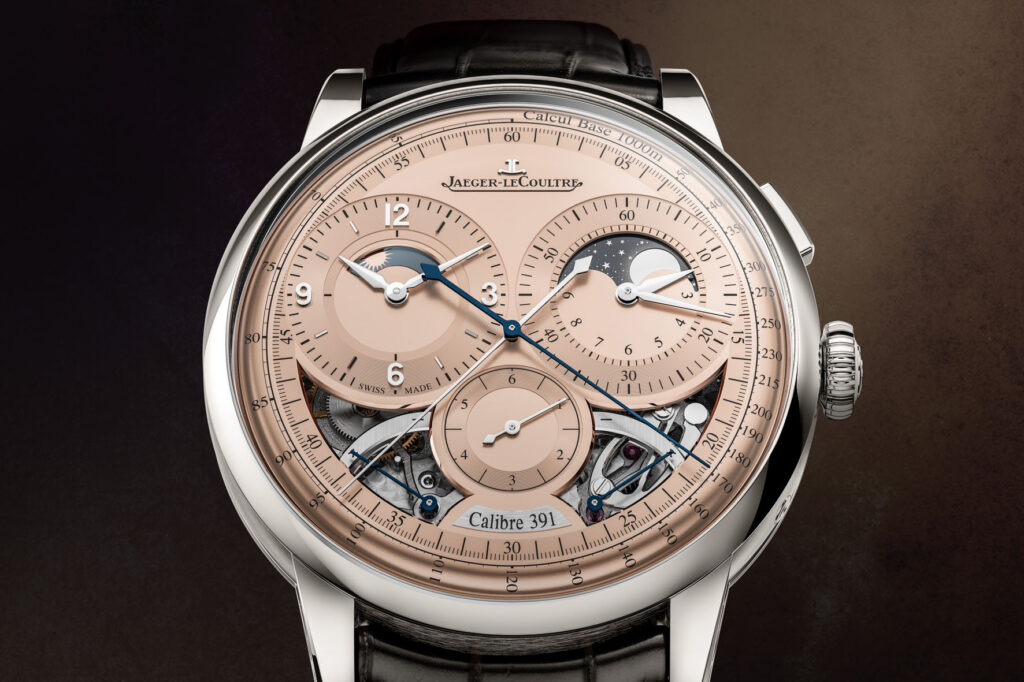
Enhancing the symmetry of the layout, the moon phase display is integrated into the chronograph hours and minutes sub-dial, which is set at 3 o’clock. Its blue background is visually balanced by that of the Night and Day display, which is integrated into the time sub-dial at 9 o’clock. Elapsed time is displayed up to 12 hours, 60 minutes and 60 seconds, accurate to 1/6th of a second and a tachymeter scale marked around the periphery of the dial enables the wearer to measure speed based on the time taken to travel a fixed distance, or to calculate distance based on speed.
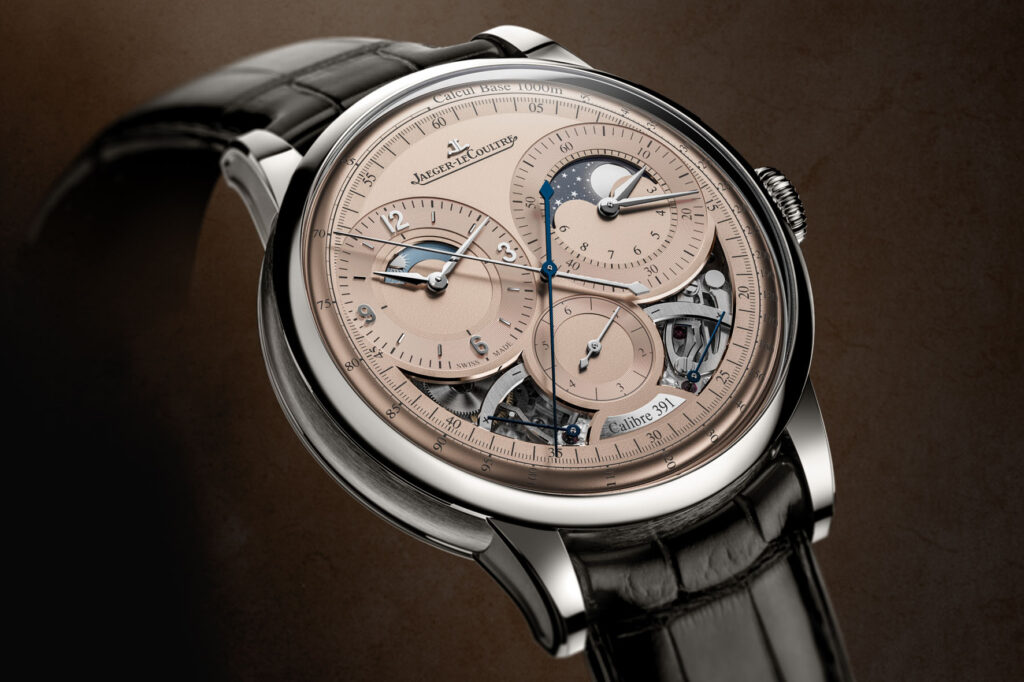
The seconde foudroyante is displayed in a sub-dial at 6 o’clock, flanked by the two open-worked areas that reveal parts of the mechanism. The two power reserves (50 hours for each barrel and gear train) are displayed on an arc-shaped bridge on each side of the sub-dial. Both barrels are wound by a single crown – forwards for the barrel that provides power for the timekeeping function and backwards for the second barrel, which provides power for the complications.
FROM THE POCKET TO THE WRIST
Marking the launch of three new Duometre models in 2024, Jaeger-LeCoultre has designed an entirely new case for the collection. A contemporary interpretation of the savonette pocket watches created by the Maison in the 19th-century, its rounded contours are highly tactile as well as visually appealing. (The French word savonette literally means a small disc of soap with rounded contours that can be cradled in the palm of a hand.) With its convex crystal and gracefully rounded bezel, the new Duometre case expresses this literal definition very well. The crown, too, has been redesigned, with deep and rounded notches that make it a joy to handle. Indeed, the highly polished edges of the lugs are the only sharp lines to be found.
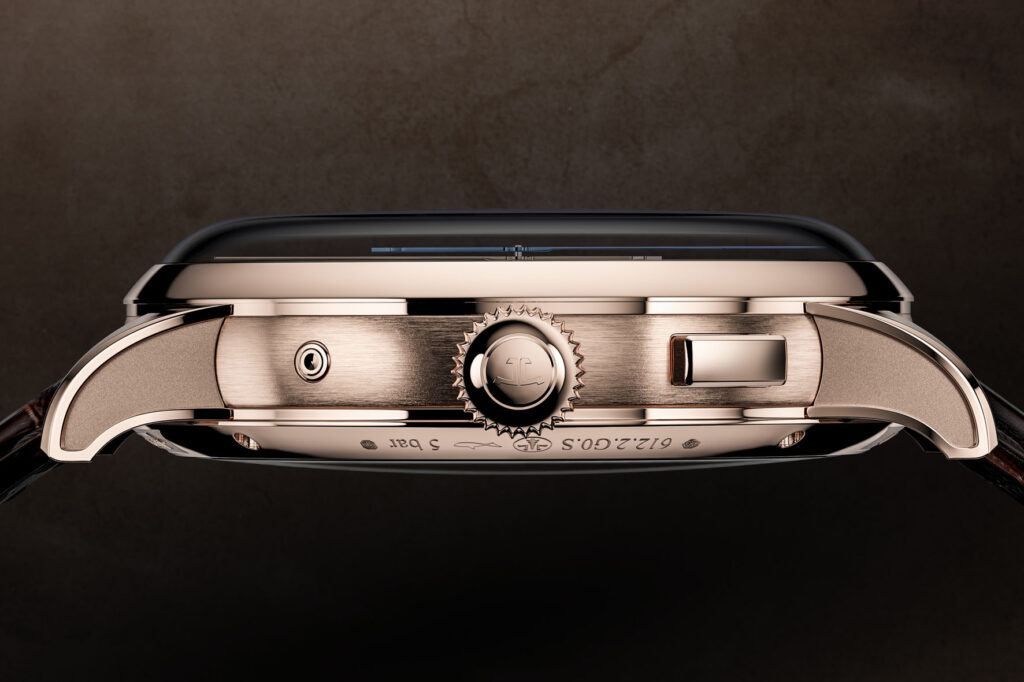
A comfortable 42.5 mm in diameter, the case is a complex structure of 34 separate parts and the lugs are screwed rather than integrated to enable the use of multiple finishing techniques. A mixture of polished, brushed and micro-blasted surfaces creates a fascinating play of light with every movement of the wrist.
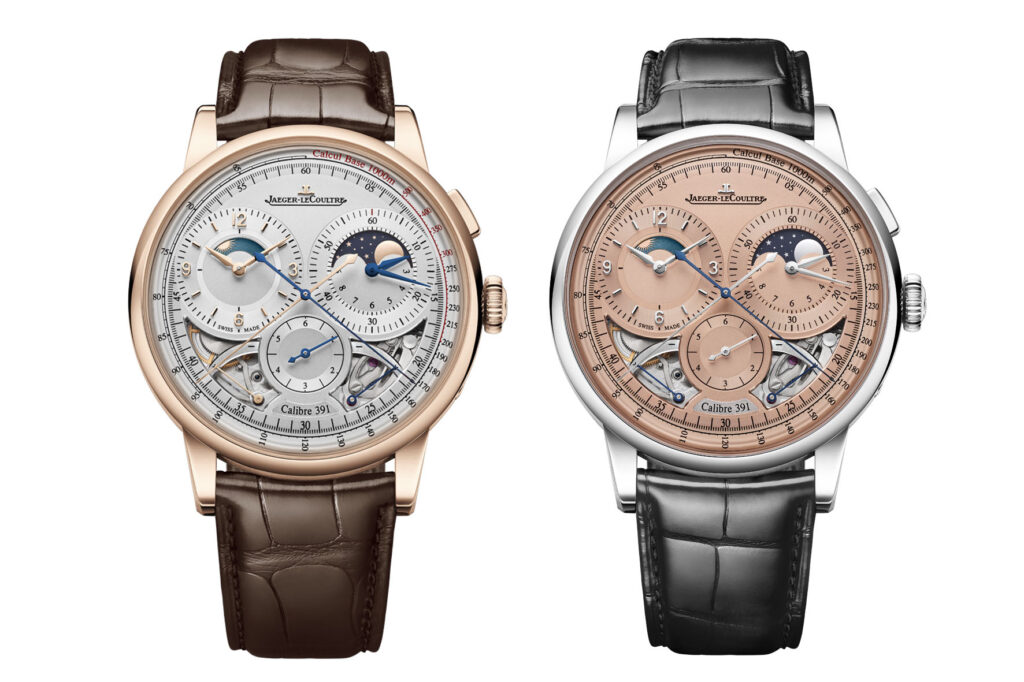
The new Jaeger-LeCoultre Duometre Chronograph Moon is available in two variations: the first with a platinum case and copper-colored dial (€.98,000); the second with a pink gold case and silver dial (€. 79,500). Both models are enhanced by a hand-stitched alligator strap with small-scale alligator lining.


